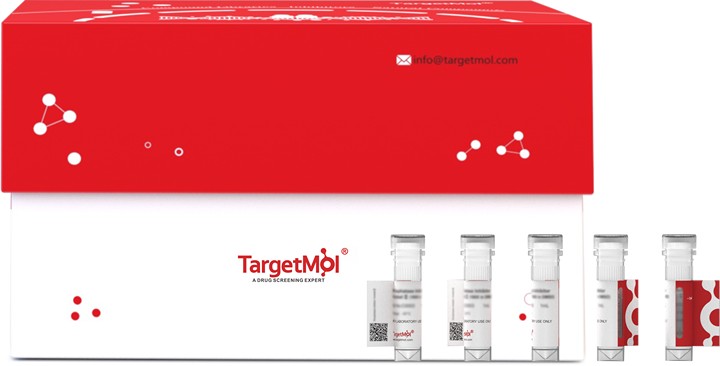 Your shopping cart is currently empty
Your shopping cart is currently empty
SPG3A Protein, Human, Recombinant (GST)
Atlastin-1, also known as Spastic paraplegia 3 protein A, Guanine nucleotide-binding protein 3, GTP-binding protein 3, GBP3, ATL1 and SPG3A, is a multi-pass membrane protein which belongs to theGBP family and atlastin subfamily. ATL1 / SPG3A is expressed predominantly in the adult and fetal central nervous system. Expression of ATL1 / SPG3A in adult brain is at least 5-fold higher than in other tissues. ATL1 / SPG3A is detected predominantly in pyramidal neurons in the cerebral cortex and the hippocampus of the brain. ATL1 / SPG3A is also expressed in upper and lower motor neurons (at protein level). A distinguishing feature of ATL1 / SPG3A is its frequent early onset, raising the possibility that developmental abnormalities may be involved in its pathogenesis. Missense SPG3A mutant atlastin-1 proteins have impaired GTPase activity and may act in a dominant-negative, loss-of-function manner by forming mixed oligomers with wild-type atlastin-1. Defects in ATL1 / SPG3A are the cause of spastic paraplegia autosomal dominant type 3 (SPG3), also known as Strumpell-Lorrain syndrome. Spastic paraplegia is a degenerative spinal cord disorder characterized by a slow, gradual, progressive weakness and spasticity of the lower limbs.

SPG3A Protein, Human, Recombinant (GST)
| Pack Size | Price | USA Warehouse | Global Warehouse | Quantity |
|---|---|---|---|---|
| 5 μg | $85 | 7-10 days | 7-10 days | |
| 10 μg | $146 | 7-10 days | 7-10 days | |
| 20 μg | $242 | 7-10 days | 7-10 days | |
| 50 μg | $477 | 7-10 days | 7-10 days | |
| 100 μg | $929 | 7-10 days | 7-10 days |
Product Information
| Biological Activity | Activity testing is in progress. It is theoretically active, but we cannot guarantee it. If you require protein activity, we recommend choosing the eukaryotic expression version first. |
| Description | Atlastin-1, also known as Spastic paraplegia 3 protein A, Guanine nucleotide-binding protein 3, GTP-binding protein 3, GBP3, ATL1 and SPG3A, is a multi-pass membrane protein which belongs to theGBP family and atlastin subfamily. ATL1 / SPG3A is expressed predominantly in the adult and fetal central nervous system. Expression of ATL1 / SPG3A in adult brain is at least 5-fold higher than in other tissues. ATL1 / SPG3A is detected predominantly in pyramidal neurons in the cerebral cortex and the hippocampus of the brain. ATL1 / SPG3A is also expressed in upper and lower motor neurons (at protein level). A distinguishing feature of ATL1 / SPG3A is its frequent early onset, raising the possibility that developmental abnormalities may be involved in its pathogenesis. Missense SPG3A mutant atlastin-1 proteins have impaired GTPase activity and may act in a dominant-negative, loss-of-function manner by forming mixed oligomers with wild-type atlastin-1. Defects in ATL1 / SPG3A are the cause of spastic paraplegia autosomal dominant type 3 (SPG3), also known as Strumpell-Lorrain syndrome. Spastic paraplegia is a degenerative spinal cord disorder characterized by a slow, gradual, progressive weakness and spasticity of the lower limbs. |
| Species | Human |
| Expression System | Baculovirus Insect Cells |
| Tag | N-GST |
| Accession Number | Q8WXF7 |
| Synonyms | SPG3A,SPG3,HSN1D,GBP3,atlastin1,atlastin GTPase 1,AD-FSP |
| Construction | A DNA sequence encoding the human SPG3A (NP_056999.2) (Met 1-Thr 447) was fused with the GST tag at the N-terminus. Predicted N terminal: Met |
| Protein Purity | > 80 % as determined by SDS-PAGE |
| Molecular Weight | 77 kDa (predicted); 66 kDa (reducing conditions) |
| Endotoxin | < 1.0 EU/μg of the protein as determined by the LAL method. |
| Formulation | Lyophilized from a solution filtered through a 0.22 μm filter, containing 50 mM Tris, 100 mM NaCl, 0.5 mM PMSF, 0.5 mM EDTA, 0.5 mM GSH, pH 8.0.Typically, a mixture containing 5% to 8% trehalose, mannitol, and 0.01% Tween 80 is incorporated as a protective agent before lyophilization. |
| Reconstitution | A Certificate of Analysis (CoA) containing reconstitution instructions is included with the products. Please refer to the CoA for detailed information. |
| Stability & Storage | It is recommended to store recombinant proteins at -20°C to -80°C for future use. Lyophilized powders can be stably stored for over 12 months, while liquid products can be stored for 6-12 months at -80°C. For reconstituted protein solutions, the solution can be stored at -20°C to -80°C for at least 3 months. Please avoid multiple freeze-thaw cycles and store products in aliquots. |
| Shipping | In general, Lyophilized powders are shipping with blue ice. |
| Research Background | Atlastin-1, also known as Spastic paraplegia 3 protein A, Guanine nucleotide-binding protein 3, GTP-binding protein 3, GBP3, ATL1 and SPG3A, is a multi-pass membrane protein which belongs to theGBP family and atlastin subfamily. ATL1 / SPG3A is expressed predominantly in the adult and fetal central nervous system. Expression of ATL1 / SPG3A in adult brain is at least 5-fold higher than in other tissues. ATL1 / SPG3A is detected predominantly in pyramidal neurons in the cerebral cortex and the hippocampus of the brain. ATL1 / SPG3A is also expressed in upper and lower motor neurons (at protein level). A distinguishing feature of ATL1 / SPG3A is its frequent early onset, raising the possibility that developmental abnormalities may be involved in its pathogenesis. Missense SPG3A mutant atlastin-1 proteins have impaired GTPase activity and may act in a dominant-negative, loss-of-function manner by forming mixed oligomers with wild-type atlastin-1. Defects in ATL1 / SPG3A are the cause of spastic paraplegia autosomal dominant type 3 (SPG3), also known as Strumpell-Lorrain syndrome. Spastic paraplegia is a degenerative spinal cord disorder characterized by a slow, gradual, progressive weakness and spasticity of the lower limbs. |
Dose Conversion
Calculator
Tech Support
| Size | Quantity | Unit Price | Amount | Operation |
|---|

Copyright © 2015-2025 TargetMol Chemicals Inc. All Rights Reserved.



